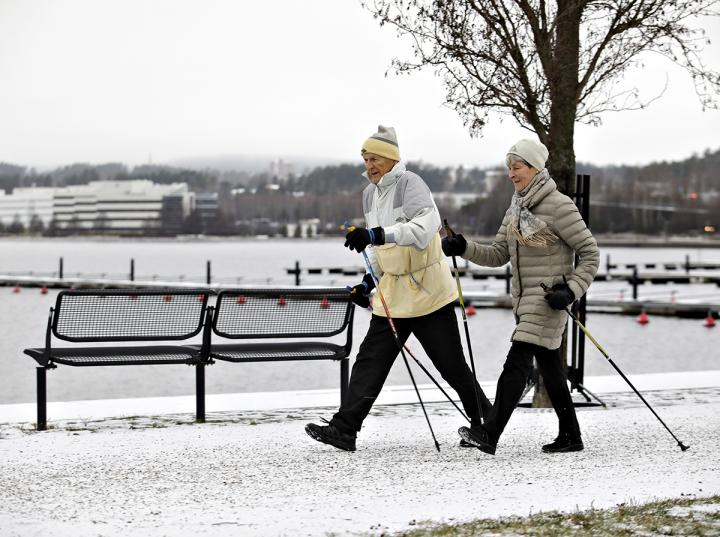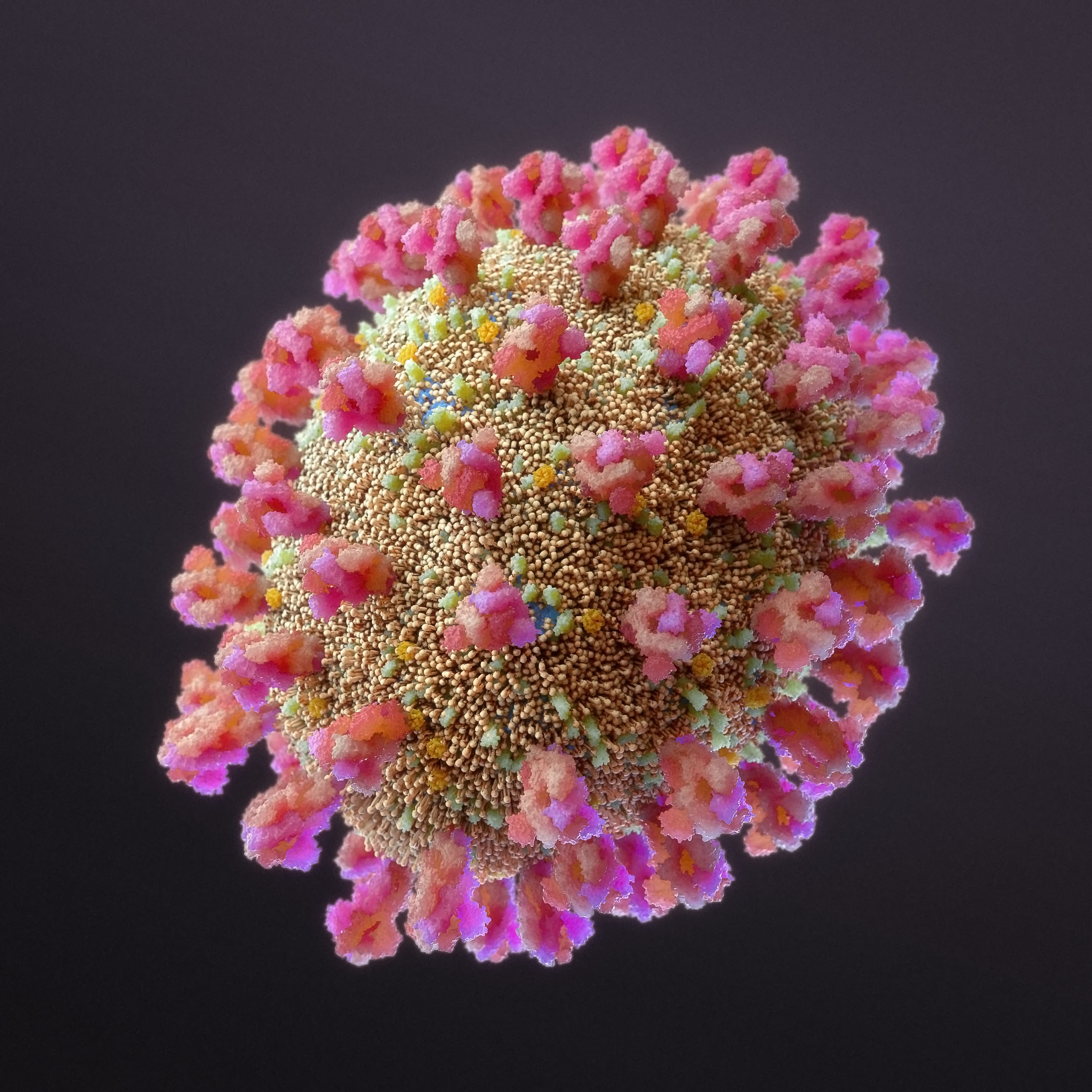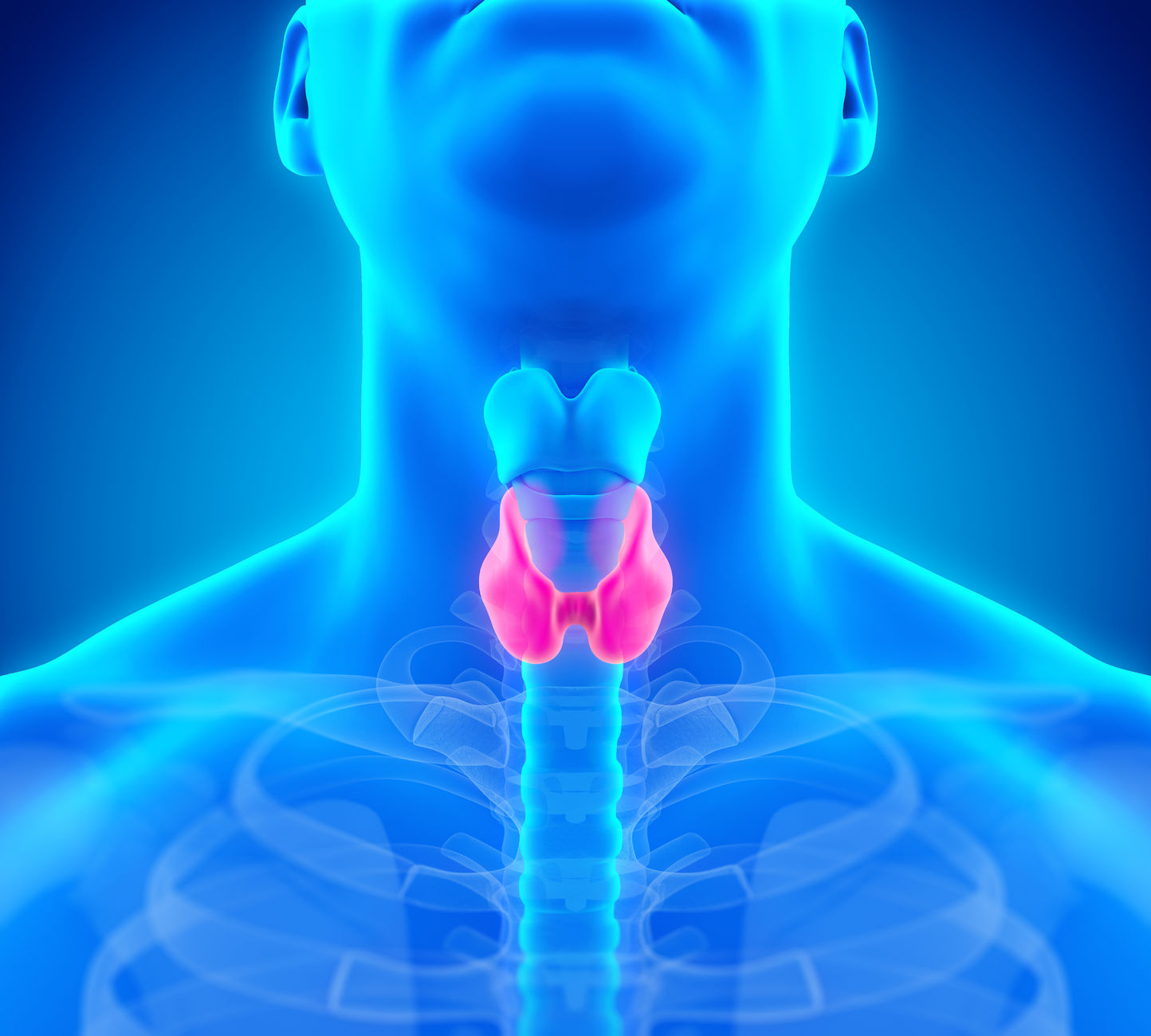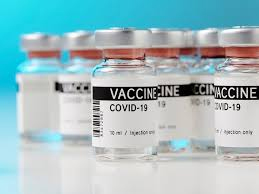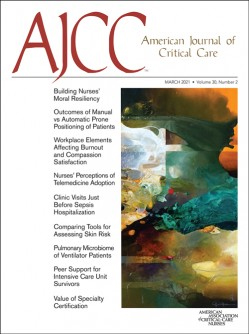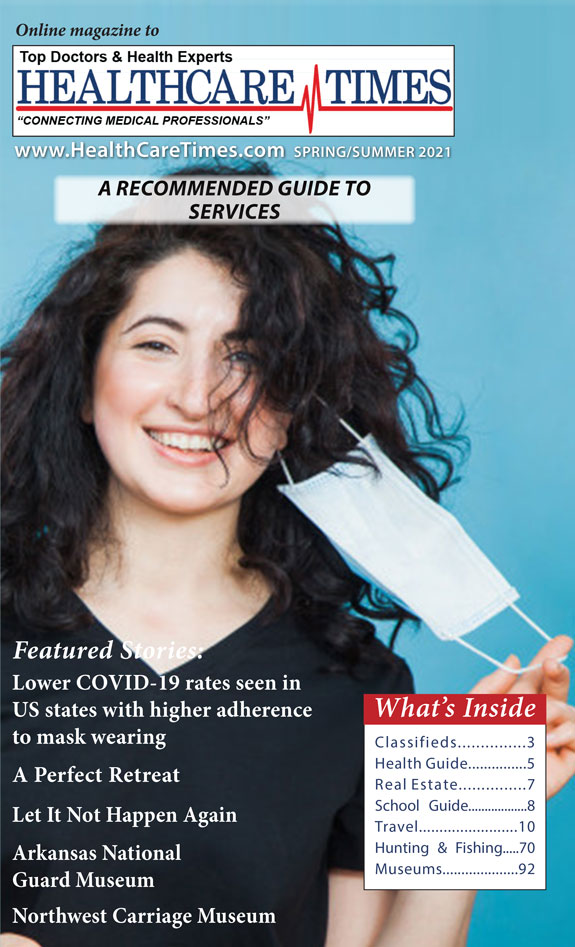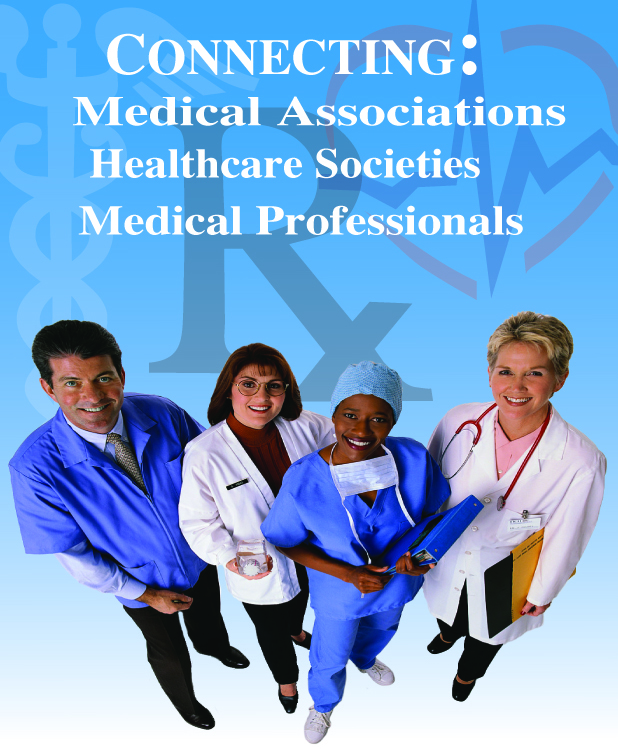News
Newswise — CHARLOTTESVILLE, Va., March 29, 2021 – An international team of researchers led by a University of Virginia School of Medicine professor is warning that scientists must better prepare for the next pandemic – and has developed a plan to do just that.
Noting the “avalanche” of scientific data generated in response to COVID-19, UVA’s Wladek Minor, PhD, and colleagues are calling for the creation of an “advanced information system” (AIS) to help scientists integrate, monitor and evaluate the vast amounts of data that will be produced as researchers reveal the molecular architecture of the next pathogen posing a big biological threat. This information on the shape, structure and function of a pathogen is essential to the development of medications, vaccines and treatments. For example, the COVID-19 vaccines now available target the “spike” protein on the surface of the SARS-CoV-2 virus.
Their heavily cited online resource for COVID-19 (https://covid-19.bioreproducibility.org/) demonstrates the usefulness of their approach and can be used as a foundation for the new research strategy, they say. The site includes carefully validated 3-D structural models of numerous proteins related to the SARS-CoV-2 virus, including many potential drug targets.
“Structural models and other experimental results produced by various laboratories must follow a standard evaluation procedure to ensure that they are accurate and conform to accepted scientific standards,” said Minor, Harrison Distinguished Professor of Molecular Physiology and Biological Physics at UVa. “Standardized validation is important for all areas of biomedical sciences, especially for structural models, which are often used as a starting point in subsequent research, such as computer-guided drug docking studies and data mining. Even seemingly insignificant errors can lead such research astray.”
Battling a Pandemic
One important role of AIS would be to identify structures that can be refined and improved, the researchers say. They were happy to note that inspection of the molecular blueprints produced for components of COVID-19 and deposited in the Protein Data Bank online database suggests that most were very good. Less than 1% needed significant reinterpretation and less than 10% could be optimized by moderate revisions.
Still, good buildings require good blueprints. The same is true with vaccines and disease treatments. It’s critical, the researchers say, that the structural and other data for pathogens are as accurate as possible, and that scientists from various fields are speaking the same language when discussing and using them. The proposed AIS would help ensure conformity across disciplines.
“Almost 100,000 COVID-19-related papers have been published and over a thousand models of macromolecules encoded by SARS-CoV-2 have been experimentally determined in about a year. No single human can possibly digest this volume of information,” Minor said. “We believe that the most promising solution to information overload and the lack of effective information retrieval is the creation of an advanced information system that is capable of harvesting results from all relevant resources and presenting the information in instructive ways that promote understanding and knowledge.”
The researchers acknowledge that implementing their proposal would be a major undertaking. Other resources that sought to offer similar benefits on a smaller scale have already come and gone. That’s why it’s so important, the scientists say, that we act now. “Creating an AIS will undoubtedly require the collaboration of many scientists who are experts in their respective fields, but it seems to be the only way to prepare biomedical science for the next pandemic,” the researchers write in a new scientific paper outlining their proposal.
“In the history of humanity, the COVID-19 pandemic is relatively mild by comparison with the bubonic plague (Black Death) that killed a hundred times more people,” the researchers conclude. “We might not be so lucky next time.”
New Approach Outlined
The researchers – from UVA, the National Cancer Institute, Poland and Austria – have detailed their plan in an article in the scientific journal IUCrJ. The article is featured on the journal cover. The resarch team consists of Marek Grabowski, Joanna M. Macnar, Marcin Cymborowski, David R. Cooper, Ivan G. Shabalin, Miroslaw Gilski, Dariusz Brzezinski, Marcin Kowiel, Zbigniew Dauter, Bernhard Rupp, Alexander Wlodawer, Mariusz Jaskolski and Minor.
In their paper, the researchers gratefully acknowledged the financial support of the National Institutes of Health’s National Institute of General Medical Sciences, grant R01-GM132595; the Polish National Agency for Academic Exchange, grant PN/BEK/2018/1/00058/U/00001; the Polish National Science Center, grant 2020/01/0/NZ1/00134; the Intramural Research Program of the NIH, National Cancer Institute, Center for Cancer Research; FWF (Austrian Science Foundation), grant P 32821; and the Polish National Science Centre, grant 2018/29/B/ST6/01989.
Minor and his longtime collaborator Zbyszek Otwinowski, PhD, of the University of Texas Southwestern Medical Center, were recently awarded the Tadeusz Sendzimir Applied Sciences Award by the Polish Institute of Arts and Sciences of America for their efforts to develop and promote software for biomedical applications in the structural biology field.
To keep up with the latest medical research news from UVA, subscribe to the Making of Medicine blog at http://makingofmedicine.virginia.edu.
Newswise — In spring 2020, when the first wave of the coronavirus pandemic hit Finland, older adults drastically reduced their out-of-home activities. During the period of government restrictions, physical exercise was the most common reason to leave home, a recent study at the University of Jyväskylä Faculty of Sport and Health Sciences finds.
"In spring 2020, it was feared that the closure of many activity destinations and the recommendations to avoid close contact with persons from other households put in place by the government would decrease physical activity levels, and thus, negatively affect older adults' physical functional capacity," Senior Researcher Erja Portegijs explains. "According to our research results, this was however, not the case."
Throughout the restriction period, physical exercise and walking outdoors, for example, in nature was possible, and even encouraged by the government later in the spring.
"This study shows that physical exercise was the most common reason to go out," Portegijs adds. "Otherwise, older participants had few reasons to go out beyond grocery shopping during the first spring of the pandemic."
Previous research shows that all activities outside of one's home are beneficial for physical activity. As the reasons to leave home were markedly limited during the first spring of the pandemic, more research is needed to determine the long-term effects on mobility and maintaining functional capacity.
"This research is unique, even though it was based on the data of 44 participants only," Portegijs says. "Previously, we did not know where older adults moved and for what reason. Studying where people go to is possible using a map-based questionnaire. This is one of the first studies utilizing such a questionnaire among older adults."
As coronavirus-related measures have varied significantly between countries, it is not sure whether these results are generalizable to other countries. In Finland, curfews were not implemented and governmental restrictions were mostly based on recommendations rather than enforced regulations.
In 2017 and 2018, a map-based questionnaire was used to collect data on frequently visited activity destinations as part of the larger AGNES study among 75-, 80-, and 85-year-old adults living in Jyväskylä city in Central Finland. In May and June 2020, participants were invited to complete the map-based questionnaire following a postal questionnaire. Only a small portion of participants was able to use digital devices independently and thus to participate. These participants had somewhat better health and function than the others.
"As abilities to use digital devices improve among the aging population, the relevance of map-based research methods will further increase," Portegijs reflects.
Photo: University of Jyväskylä
Physical exercise was the most common reason to leave home during the first wave of the pandemic in 2020.
Newswise — PHILADELPHIA—Hormone drugs that reduce androgen levels may help disarm the coronavirus spike protein used to infect cells and stop the progression of severe COVID-19 disease, suggests a new preclinical study from researchers in the Abramson Cancer Center at the University of Pennsylvania and published online in Cell Press’s iScience.
Researchers show how two receptors—known as ACE2 and TMPRSS2—are regulated by the androgen hormone and used by SARS-CoV-2 to gain entry into host cells. Blocking the receptors with the clinically proven inhibitor Camostat and other anti-androgen therapies prevented viral entry and replication, they also showed in lab studies.
The findings provide more insight into the molecular mechanisms of the virus but also support the use of anti-androgen therapies to treat COVID-19 infections, which are currently being investigated in clinical trials and have produced promising results. They also support data showing increased mortality and severity of disease among men compared to women, who have much lower levels of androgen.
“We provide the first evidence that not only TMPRSS2, which is known to be regulated by androgen, but ACE2 can also be directly regulated by this hormone,” said senior author Irfan A. Asangani, PhD, an assistant professor of Cancer Biology in the Perelman School of Medicine at the University of Pennsylvania. “We also show that the SARS-CoV-2 spike relies on these two receptors to impale and enter cells, and that they can be blocked with existing drugs. That’s important because if you stop viral entry, you reduce the viral load and disease progression.”
Camostat is a drug approved for use in Japan to treat pancreatitis that inhibits TMPRSS2. Other anti-androgen therapies, including androgen deprivation therapy used to treat prostate cancer, serve similar functions.
Driven by the disparity in COVID-19 rates between men and women, the cancer researchers sought to better understand the role androgen and its receptors played in infections, which has long been known to be a driver of prostate cancer.
The researchers performed experiments with a pseudotype SARS-CoV-2, which carries the spike proteins of the virus but not its genome.
In mice with significantly reduced androgen levels and cells treated with anti-androgen treatments, the researchers found little to no expression of TMPRSS2 and ACE2, suggesting both are regulated by the hormone. They also observed how inhibiting TMPRSS2 with Camostat blocked priming of the spike for entry into cells. That drug, as well as enzalutamide, an anti-androgen therapy used to treat prostate cancer, also blocked the virus’ entry into lung and prostate cells. Combining these therapies, they found, significantly reduced virus entry into cells.
“Together, our data provide a strong rationale for clinical evaluations of TMPRSS2 inhibitors, androgen-deprivation therapy / androgen receptor antagonists alone or in combination with antiviral drugs as early as clinically possible to prevent COVID-19 progression,” the authors wrote.
In March, researchers from Brazil reported preliminary results of 600 hospitalized patients in a clinical trial investigating proxalutamide, a new anti-androgen therapy, for the treatment of COVID-19. The drug reduced mortality risk by 92 percent and shortened the median hospital stay by nine days versus the standard of care, the researchers reported.
Next, Asangani and his colleagues will partner with Susan R. Weiss, PhD, a professor of Microbiology and co-director of the Penn Center for Research on Coronaviruses and Other Emerging Pathogens, to investigate the findings further using live SARS-CoV-2, as well as anti-androgen therapies’ ability to block different variants of the virus, which continue to emerge and are often differentiated by their spike proteins.
Penn co-authors of the study include Qu Deng, Reyaz ur Rasool, Ronnie M. Russell, and Ramakrishnan Natesan.
The study was supported by the National Institutes of Health (R01 CA249210-0), a Department of Defense Idea Development Award, a Conquer Cancer Now Award, and Sarcoma Foundation of America.
NEARLY A THIRD OF OLDER THYROID PATIENTS TAKE MEDICATIONS THAT INTERFERE WITH THYROID FUNCTION TESTS
Newswise — Nearly one-third of adults age 65 and older who take thyroid hormone also take medications that are known to interfere with thyroid function tests, according to a study presented virtually at ENDO 2021, the Endocrine Society’s annual meeting.“Our findings highlight the complexity of managing thyroid hormone replacement in older adults, many of whom take medications for other medical conditions,” said first author Rachel Beeson, M.D., of the University of Michigan in Ann Arbor, Mich. “Until now, the prevalence of concurrent use of thyroid hormone and interfering medications in older adults, and patient characteristics associated with this practice, has been unknown.”Thyroid hormone use is very common in older adults. Levothyroxine, used to treat hypothyroidism (low thyroid hormone), is one of the most frequently prescribed medications in the United States. Thyroid function tests are used to determine the dose and effectiveness of treatment. The results of these tests can be altered by a variety of medications.Beeson and colleagues analyzed data from 538,137 adults age 65 and older who used thyroid hormone. They looked at how many patients concurrently took thyroid hormone and medications that commonly interfere with thyroid function tests, such as prednisone, prednisolone, carbamazepine, phenytoin, phenobarbital, amiodarone, lithium, interferon-alpha and tamoxifen.Overall, 31.6% of patients were taking medications that have been known to interfere with thyroid function tests.“When we examined patient characteristics associated with concurrent use of thyroid hormone and at least one interfering medication, this was more likely to be seen in patients who were female, non-white and of Hispanic ethnicity,” Beeson said. The researchers also found people who had other chronic medical conditions were more likely to concurrently use thyroid hormone and medications that interfere with thyroid tests.The National Institute on Aging supported the research with a grant to senior author Maria Papaleontiou, M.D.
Researchers at Rutgers School of Dental Medicine have found evidence that two types of mouthwash disrupt the COVID-19 virus under laboratory conditions, preventing it from replicating in a human cell.
The study, published in the journal Pathogens, found that Listerine and the prescription mouthwash Chlorhexidine disrupted the virus within seconds after being diluted to concentrations that would mimic actual use. Further studies are needed to test real-life efficacy in humans.
The study was conducted in a lab using concentrations of the mouthwash and the time it would take to contact tissues to replicate conditions found in the mouth, said Daniel H. Fine, the paper’s senior author and chair of the school’s Department of Oral Biology.
The study found two other mouthwashes showed promise in potentially providing some protection in preventing viral transmission: Betadine, which contains povidone iodine, and Peroxal, which contains hydrogen peroxide. However, only Listerine and Chlorhexidine disrupted the virus with little impact on skin cells inside the mouth that provide a protective barrier against the virus.
“Both Povidone iodine and Peroxal caused significant skin cell death in our studies, while both Listerine and Chlorhexidine had minimal skin cell killing at concentrations that simulated what would be found in daily use,” said Fine.
The team studied the efficacy of mouthwash potential for preventing viral transmission to better understand how dental providers can be protected from aerosols exhaled by patients. “As dentists, we’re right there in a patient’s face. We wanted to know if there’s something that might lower the viral load,’’ said coauthor Eileen Hoskin, an assistant professor at Rutgers School of Dental Medicine.
Fine cautions the public against relying on mouthwash as a way to slow the spread until it is proven in clinical trials on humans.
“The ultimate goal would be to determine whether rinsing two or three times a day with an antiseptic agent with active anti-viral activity would have the potential to reduce the ability to transmit the disease. But this needs to be investigated in a real-world situation,’’ he said.
Previous research has shown various types of antiseptic mouthwashes can disrupt the novel coronavirus and temporarily prevent transmission, but this was one of the first studies that examined antiseptic rinse concentrations, time of contact and the skin-cell killing properties that simulated oral conditions. The study was conducted by a team of dental school scientists and virologist at the Public Health Research Institute.
“Since the SARS CoV-2 virus responsible for COVID-19 enters primarily through the oral and nasal cavity, oral biologists should be included in these studies because they have an in-depth understanding of oral infectious diseases,” said Fine.
Other Rutgers authors included Theresa Chang and Chuan Xu at the Public Health Research Institute based at Rutgers New Jersey Medical School and Kenneth Markowitz and Carla Cugini at Rutgers School of Dental Medicine.
Two research papers highlight single-cell dissection of kidney tumors to identify new immunotherapy treatments and targets
Newswise — BOSTON - In the last two decades, immunotherapy has emerged as a leading treatment for advanced renal carcinoma cancer (more commonly known as kidney cancer). This therapy is now part of the standard of care, but it doesn’t work for all patients, and almost all patients, no matter how they respond initially, become more resistant to treatment over time. The immune system plays a critical role in kidney cancer disease progression and in response to therapies, and so a fundamental challenge in the field is to understand the underlying “immune circuitry” of this disease.
In two new studies published today in Cancer Cell, researchers from Dana-Farber Cancer Institute and the Broad Institute of MIT and Harvard used the emerging technology of single-cell RNA sequencing to draw a clearer picture of how kidney tumors’ microenvironments change in response to immunotherapy. The researchers believe that this work points to potential targets for new drug therapies.
“We have a standard of care for treating kidney cancer patients, but many patients do not respond to existing therapies, and we need to discover new targets,” said Eliezer Van Allen, MD, an oncologist at Dana-Farber, associate professor of medicine at Harvard Medical School, associate member at the Broad Institute, and co-senior author on one of the papers.
“These companion studies shed important new light on the biology of advanced kidney tumors and their surrounding environments. With this increased understanding, researchers will be able to identify new potential drug treatment targets and, overall, expand the number of patients who can receive effective treatment,” remarked Catherine J. Wu, MD, chief of the Division of Stem Cell Transplantation and Cellular Therapies at Dana-Farber, professor of medicine at Harvard Medical School, an institute member at the Broad, and co-senior author on one of the papers.
“A patient’s immune system plays a critical role in controlling both the progression of cancer and the response to immune therapies,” adds Toni K. Choueiri, MD director of the Lank Center for Genitourinary Oncology at Dana-Farber, an associate member at the Broad, and the Jerome and Nancy Kohlberg Professor of Medicine at Harvard Medical School. Choueiri is co-senior author on both papers. “We don’t quite know why some tumors respond and some don’t. We also don’t know why kidney cancers become resistant to immunotherapy. These two studies are a large team effort to give us a sharper image of what happens on not just the cellular level but down to the RNA of each of those cells.”
With immunotherapy, patients are typically given an immune checkpoint blockade (ICB) (often in combination with VEGF tyrosine kinase inhibitors; TKIs). The drugs are designed to stop the immune system from stopping itself, thus allowing it to attack the tumor like any other unwanted pathogen. However, immunotherapy is only successful in about half of ccRCC patients, and almost all patients build resistance to the treatment over time.
About 76,000 Americans are diagnosed with kidney cancer in the U.S. each year, which is also responsible for more than 13,000 deaths annually, according to the American Cancer Society.
Finding new targets to disrupt an immune dysfunction circuit
In one study, researchers performed single-cell RNA and T cell receptor sequencing on 164,722 individual cells from tumor and adjacent non-tumor tissue. These samples came from 13 patients with clear cell renal cell carcinoma (ccRCC), which make up 80 percent of kidney cancer cases, at different stages of disease: early, locally advanced and advanced/metastatic.
In most solid tumors, the presence of a specific type of immune cell, the CD8+ T cell is a good thing. Their presence shows the immune system is working. However, researchers found that in advanced stage disease these CD8+ T cells were “exhausted,” and not able to carry out their usual function.
They also discovered more anti-inflammatory or “M2-like” macrophages, a type of white blood cell that suppresses the immune system, in advanced stage disease. CD8+ T cells and macrophages were playing off each other and caught in an “immune dysfunction circuit,” said co-lead author David A. Braun, MD, PhD, an oncologist at Dana-Farber and instructor of medicine at Harvard Medical School. In advanced disease samples, macrophages produce molecules that support CD8+ T cell exhaustion, at the same time those CD8+ T cells make molecules that supported the life of pro-tumor macrophages.
These findings are important because they “open up a whole new landscape of potential treatment targets,” said Braun. “We already target some of the immune system pathways in kidney cancer, but our work uncovered many other immune inhibitory pathways supporting cell dysfunction. As we move forward, we can look at all of these interactions and identify new opportunities to disrupt the circuit, with the goal of restoring the immune system’s anti-tumor effect and ultimately improving outcomes for patients with kidney cancer.”
Choueiri and Wu are co-senior authors on the study, “Progressive immune dysfunction with advancing disease stage in renal cell carcinomas.”
Identifying treatments beyond the PD-1/PD-L1 axis
The other study published today looks at tumor and immune reprogramming during immunotherapy in ccRCC.
Most current immunotherapy treatments for ccRCC target the PD-1/PD-L1 axis, a pathway that makes proteins that halt the immune system from attacking cancer cells. Stop the stoppers, and the immune system can go after cancer cells.
But these drugs are only effective in half of ccRCC patients, and almost all patients eventually develop resistance to the drug.
“There may be immune evasion mechanisms outside of PD-1/PD-L1 that play an important role in response or resistance,” said Kevin Bi, computational biologist at Dana-Farber and co-lead author on the paper.
Researchers used single-cell RNA sequencing to look 34,326 total cells drawn from samples from eight patients, seven of whom had metastatic renal cancer and one with localized disease. Five samples were from patients who had already received treatment, either through ICB, or a combination of ICB and TKI. Those treated with ICB were all given drugs that specifically targeted the PD-1/PD-L1 axis.
Researchers found that ICB remodels the cancer microenvironment and changes how cancer and immune cells interact, in a few ways:
In patients whose cancer responded to treatment, subsets of cytotoxic T-cells, which are cancer-fighting lymphocytes, express higher levels of co-inhibitory receptors and effector molecules.
Macrophages from treated biopsies shift towards pro-inflammatory states in response to an interferon-rich microenvironment but also upregulate immunosuppressive markers.
In cancer cells treated with ICB, researchers found two subpopulations, differing in angiogenic signaling and upregulation of immunosuppressive programs.
In advance stage cancers treated with ICB, expression signatures for cancer cell subpopulations and immune evasion were associated with the PBRM1 mutation, the second most commonly mutated gene in ccRCC.
These findings show the importance of exploring immune pathways away from the PD-1/PD-L1 axis, said Meng Xiao He, a graduate student in the Harvard Biophysics program, member of the Van Allen lab at Dana-Farber, and a co-lead author on the paper.
“We need to look at things that are not just CD8+ T cells. We should look at macrophages, some of the other immune checkpoints, and assess what may be targetable,” he said. “We’re still in the early days of trying to understand the mechanisms of immunotherapy resistance in different diseases. There’s a lot of room to keep trying so that more people respond, and those responses hold.”
Choueiri and Van Allen are co-senior authors on the study, "Tumor and immune reprogramming during immunotherapy in advance renal cell carcinoma."
The co-authors of “Progressive immune dysfunction with advancing disease stage in renal cell carcinomas” are Kelly Street, PhD, of Dana-Farber and the Harvard T.H. Chan School of Public Health; Kelly P. Burke, MD, PhD, Dana-Farber and Harvard Medical School; David L. Cookmeyer, of Harvard Medical School; Thomas Denize, MD of Harvard Medical School and Brigham and Women’s Hospital (BWH); Christina B. Pedersen, of Technical University of Denmark, Rigshospitalet-Copenhagen University Hospital; Satyen H. Gohil, PhD, of Dana-Farber, Harvard Medical School, the Broad Institute and University College, London; Nicholas Schindler, BSE, of Dana-Farber; Lucas Pomerance, BA of Dana-Farber and Harvard Medical School; Lauren Hirsch, MD, of Dana-Farber and Harvard Medical School; Ziad Bakouny, MD, of Dana-Farber; Yue Hou, PhD, of Dana-Farber; Juliet Forman, of Dana-Farber and the Broad Institute; Teddy Huang, PhD of Dana-Farber; Shuqiang Li, PhD, of Dana-Farber and Harvard Medical School; Ang Cui, MS, of the Broad Institute and Harvard-MIT Division of Health Sciences and Technology; Derin B. Keskin, PhD, of Dana-Farber and the Broad Institute; John Steinharter, MS, of Dana-Farber; Gabrielle Bouchard, BS, of Dana-Farber; Maxine Sun, PhD, MPH, of Dana-Farber; Erica M. Pimenta, MD, PhD, of Dana-Farber and Harvard Medical School; Wenxin Xu, MD of Dana-Farber and Harvard Medical School; Kathleen M. Mahoney, MD, PhD, of Dana-Farber, Harvard Medical School and Beth Israel Deaconess Medical Center; Bradley A. McGregor, MD, of Dana-Farber and Harvard Medical School; Michelle S. Hirsch, MD, PhD, of Harvard Medical School and BWH; Steven L. Chang, MD, of Harvard Medical School and BWH; Kenneth J. Livak, PhD, of Dana-Farber; David F. McDermott, MD, of Harvard Medical School and Beth Israel Deaconess Medical Center; Sachet A. Shukla, PhD, of the Broad Institute and Dana-Farber; Lars R. Olsen, PhD of Technical University of Denmark, Center for Genomic Medicine, Rigshospitalet; Sabina Signoretti, MD, of Harvard Medical School, BWH and Dana-Farber; Arlene H. Sharpe, MD, PhD, of the Broad Institute, Harvard Medical School and BWH; Rafael A. Irizarry, PhD, of Dana-Farber and Harvard T.H. Chan School of Public Health.
Financial support was provided Dana-Farber/Harvard Cancer Center Kidney Cancer Specialized Program of Research Excellence (grants P50CA101942-12 and P50CA101942); Dana-Farber/Harvard Cancer Center Kidney Cancer Specialized Program of Research Excellence Career Enhancement Program (grants P50CA101942-15 and P50CA101942), Department of Defense Congressionally Directed Medical Research Programs (grants KC170216 and KC190130); Department of Defense Academy of Kidney Cancer Investigators (grant KC190128), National Institute of General Medical Sciences (grants 5R35GM131802 and 5R01GM083084), National Human Genome Research Institute ENCODE Data Analysis Center (grant 5R01HG009446), Independent Research Fund Denmark (grant 8048-00078B), Kay Kendall Leukemia Fund Fellowship, Foundation de France during her post-doctoral, Bristol-Myers Squibb, Genentech, National Cancer Institute Research Specialist Award (grant R50CA251956), National Cancer Institute (grants R21 CA216772-01A1 and NCI-SPORE-2P50CA101942-11A1), ASCO Conquer Cancer Foundation Young Investigator Award; National Cancer Institute (grant R50RCA211482); National Human Genome Research Institute (grant R35GM131802), Cancer Center Support Grant (P30CA006516), Kohlberg Chair at Harvard Medical School, Trust Family, Michael Brigham, and Loker Pinard Funds for Kidney Cancer Research at Dana-Farber; National Institute of Health (grants NCI-1RO1CA155010 and NIH/NCI U24 CA224331); G. Harold and Leila Y. Mathers Foundation and the Parker Institute for Cancer Immunotherapy.
The co-authors of “Tumor and immune reprogramming during immunotherapy in advance renal cell carcinoma” are Ziad Bakouny, MD, of Dana Farber; Abhay Kanodia, Sara Napolitano, Jingyi Wu, and Grace Grimaldi, BS, of Dana-Farber and the Broad Institute; David A. Braun, MD, PhD, of Dana-Farber, the Broad Institute and Harvard Medical School; Michael S. Cuoco, BS, of the Broad Institute; Angie Mayorga, BA, of Dana-Farber; Laura DelloStritto, MPH, of Dana-Farber and the Broad Institute; Gabrielle Bouchard, BS, of Dana-Farber; John Steinharter, MS, of Dana-Farber; Alok K. Tewari, MD, PhD, of Dana-Farber and Harvard Medical School; Natalie I. Vokes, MD, of Dana-Farber and the Broad Institute; Erin Shannon, BS, of the Broad Institute; Maxine Sun, PhD, MPH of Dana-Farber; Jihye Park, PhD, of Dana-Farber and the Broad Institute; Steven L. Chang, MD, of BWH; Bradley A. McGregor, MD, of Dana-Farber; Rizwan Haq, MD, PhD of Dana-Farber and the Broad Institute; Thomas Denize, MD, of Harvard Medical School and BWH; Sabina Signoretti, MD, of Harvard Medical School, BWH and Dana-Farber; Jennifer L. Guerriero, PhD, of Harvard Medical School and Dana-Farber; Sébastien Vigneau, PhD, of Dana-Farber and the Broad Institute; Orit Rozenblatt-Rosen, PhD, of the Broad Institute; Asaf Rotem, PhD, of Dana-Farber and the Broad Institute; Aviv Regev, PhD, of Genentech.
Financial support was provided by the National Institutes of Health (grants U01 CA233100, R01 CA227388, U2C CA233195, T32 GM008313, T32 CA009172); the National Science Foundation (grant GRFP DGE1144152), Novartis-DDP grant, Kure It-AACR grant, Dunkin’ Donuts Breakthrough Grant, Dana-Farber/Harvard Cancer Center Kidney Cancer Specialized Program of Research Excellence (grant P50CA101942-15; Department of Defense Congressionally Directed Medical Research Programs (grants KC170216 and KC190130), Department of Defense Academy of Kidney Cancer Investigators (grant KC190128), Kohlberg Chair at Harvard Medical School and the Trust Family, Michael Brigham, and Loker Pinard Funds for Kidney Cancer Research at Dana-Farber.
About Dana-Farber Cancer Institute
Dana-Farber Cancer Institute is one of the world’s leading centers of cancer research and treatment. Dana-Farber’s mission is to reduce the burden of cancer through scientific inquiry, clinical care, education, community engagement, and advocacy. We provide the latest treatments in cancer for adults through Dana-Farber/Brigham and Women’s Cancer Center and for children through Dana-Farber/Boston Children’s Cancer and Blood Disorders Center. Dana-Farber is the only hospital nationwide with a top 10 U.S. News & World Report Best Cancer Hospital ranking in both adult and pediatric care.
As a global leader in oncology, Dana-Farber is dedicated to a unique and equal balance between cancer research and care, translating the results of discovery into new treatments for patients locally and around the world, offering more than 1,100 clinical trials.
MOUNT SINAI DEVELOPS A SAFE, LOW-COST COVID-19 VACCINE - COULD HELP LOW- AND MIDDLE-INCOME COUNTRIES
Newswise — A low-cost COVID-19 vaccine candidate that could be produced in the United States and worldwide using existing influenza virus manufacturing infrastructure has been developed by researchers at Icahn School of Medicine at Mount Sinai, with the potential to rapidly produce hundreds of millions of vaccine doses to mitigate the impact of the current pandemic and future viral outbreaks. The vaccine, which works the same way many flu vaccines do, is undergoing clinical development planning in several countries (including Mexico) through a licensing agreement with Mount Sinai. Early-stage clinical trials are also underway at Mount Sinai Health System in New York.
“To contain the spread of the virus worldwide, a vaccine that is both effective and cost-effective is urgently needed, especially in low- and middle-income countries with limited resources,” says Peter Palese, MD, Horace W. Goldsmith Professor and Chair of Microbiology at Icahn Mount Sinai, and senior author of two studies examining the effects of so-called Newcastle disease virus (NDV) vaccines in animal models (EBioMedicine, November 2020, and Vaccines, December 2020). “Our work suggests that an NDV-based vaccine, which can be produced from embryonated chicken eggs, would be a safe and highly scalable way to meet the vast demands of the global vaccine market.”
Most COVID-19 vaccines work by exposing people to the “spike” protein, an important part of the structure of SARS-CoV-2, the virus that causes COVID-19. But they differ in how they get the spike protein into the recipient. Mount Sinai’s vaccine works by introducing the spike protein into the body via the harmless NDV virus, prompting the body’s cells to make copies of the spike protein. When this occurs, the immune system begins to produce antibodies and T cells to specifically target the spike protein; these will neutralize any foreign intruder, like SARS-CoV-2, that contains it.
The NDV vaccine against SARS-CoV-2 was created by a globally recognized team of virologists from Mount Sinai, including Dr. Palese; Florian Krammer, PhD, Mount Sinai Professor in Vaccinology; and Adolfo Garcia-Sastre, PhD, Irene and Dr. Arthur M. Fishberg Professor of Medicine and Director of the Global Health and Emerging Pathogens Institute at Mount Sinai. “Our study demonstrated that the neutralizing antibodies produced by the NDV vaccine provided strong protection in animal models from SARS-CoV-2 infection,” notes Dr. Krammer. “Also, because the NDV is not a human pathogen, the spike antigen could be delivered more efficiently and without being compromised by any pre-existing immunity in humans. Another advantage is the fact that NDV-based vaccines have been tested extensively in human trials and have compiled a very good safety record over the years.”
In Mexico, a licensing agreement between Mount Sinai and Laboratorio Avi-Mex S.A. de C.V. (Avimex), a veterinary pharmaceutical company, will enable that country to soon begin Phase 1 trials in humans of a COVID-19 vaccine using NDV vector technology. Avimex began collaborating with Mount Sinai in 2003 on developing veterinary influenza vaccines and has since produced millions of doses based on the NDV vector platform.
“Being able to vaccinate populations in all parts of the world, and not just those in high-income countries, is critical if we’re going to establish herd immunity and contain the spread of COVID-19,” says Dr. Palese. “We believe that NDV-based vaccines can be a vital part of the solution. They could lead to vaccination of a large percentage of the world’s population over a very short period by using existing technology and infrastructure in a highly cost-effective, efficient, and safe way.”
Newswise — A new study led by Washington University School of Medicine in St. Louis and the National Cancer Institute (NCI) has identified an association between slow walking pace and an increased risk of death among cancer survivors.
While the study does not establish that slow walking is a cause of death, the association persisted across at least nine tumor types. Investigators now call for more research into these relationships and whether targeted interventions such as physical activity programs could help cancer survivors improve their ability to walk and increase survival after cancer diagnosis and treatment.
The study, a collaboration between Washington University, the NCI of the National Institutes of Health (NIH), the University of North Carolina and George Washington University, appears March 4 in Cancer Epidemiology, Biomarkers & Prevention, a journal of the American Association for Cancer Research.
“Cancer survivors are living longer than ever – and that’s good news,” said first author Elizabeth A. Salerno, PhD, an assistant professor of surgery in the Division of Public Health Sciences at Washington University. “But it’s important to improve our understanding of how the diagnosis and treatment of a broad range of cancers may affect walking pace during survivorship — a potentially modifiable risk factor — which could lead to new treatment and rehabilitation strategies to improve the health of these patients.”
The researchers studied over 233,000 participants enrolled in the National Institutes of Health-American Association of Retired Persons (NIH-AARP) Diet and Health Study. Participants, who were ages 50 to 71, answered questionnaires about their overall health and walking pace, and whether they had any disability related to walking, such as walking at a very slow pace or being unable to walk. After the assessment, participants were followed for several years.
Compared with healthy controls enrolled in the study, cancer survivors were 42% more likely to report walking at the slowest pace and 24% more likely to report being disabled. Among cancer survivors, those who walked at the slowest pace had more than twofold increased risk of death from any cause, compared with those reporting the fastest walking pace.
The association between the slowest walking pace and a significantly increased risk of death from any cause held for nine cancer types, including breast, colon, melanoma, Non-Hodgkin lymphoma, oral, prostate, rectal, respiratory and urinary cancers. The association between mobility disability (not just slow pace) and death was even stronger and included all nine of the cancers mentioned above, plus endometrial, endocrine, ovarian and stomach cancers.
While slow walking pace also was linked to increased mortality that was due to any cause among individuals without a cancer diagnosis, the risk of death more than doubled for cancer survivors. Compared with individuals without a cancer diagnosis who walked at the fastest pace, cancer survivors who walked the slowest had more than tenfold increased risk of death from any cause. Cancer survivors with mobility disability had more than fivefold increased risk of death compared with individuals with no cancer diagnosis or disability.
The researchers noted that cancer survivors reported difficulties walking five years or more after cancer diagnosis and treatment, suggesting that the detrimental effects of cancer diagnosis and therapy are widespread across cancer types and long lasting, creating opportunities for intervening to help such patients improve their walking ability and pace.
“To our knowledge, this analysis is the first to explore the relationship between cancer, walking pace and subsequent mortality in 15 different cancer types,” said Salerno, who conducted this research while a postdoctoral researcher at the NCI. “Next steps include identifying the underlying reasons for these associations. It’s possible that slow walking may be due to the cancer itself, adverse effects of treatment, or changes in lifestyle. There is still much to be learned about these complex relationships, but our results highlight the importance of monitoring and even targeting walking pace after cancer.”
Study published in American Journal of Critical Care reports how five years of rapid mortality reviews of 500+ medical ICU patient deaths sparked systemic changes, quality improvements
Newswise — An in-person multidisciplinary rapid mortality review (RMR) process helped identify specific areas to improve patient care at a Los Angeles hospital, according to a study published in American Journal of Critical Care (AJCC).
The novel approach helped front-line clinicians understand both individual- and systems-level issues that contribute to mortality, with the ultimate aim of optimizing the delivery of patient care.
“Rapid Mortality Review in the Intensive Care Unit: an In-Person Multidisciplinary Improvement Initiative” explores the data generated from five years of reviewing patient deaths that occurred in the 24-bed medical intensive care unit (ICU) at Ronald Reagan University of California Los Angeles (UCLA) Medical Center.
The analysis found that the RMR process not only identified immediate concerns related to patient care but also yielded valuable insights on potentially preventable patient deaths and areas for hospital improvement initiatives.
First author Kristin Schwab, MD, is a pulmonologist and critical care physician at UCLA Health and a clinical instructor in the Division of Pulmonary and Critical Care Medicine, Department of Medicine, at UCLA’s David Geffen School of Medicine.
“Our findings suggest that these short and timely in-person meetings can be a powerful tool for efforts to both improve quality and prevent mortality in the ICU,” she said. “Bringing members of the multidisciplinary care team together for regular face-to-face discussions provided a forum that revealed concerns and solicited tangible ideas for solutions.”
Retrospective case reviews, provider surveys, and structured morbidity and mortality conferences can be useful tools for discussions about safety and quality issues, but these common tactics are unlikely to provide an efficient and practical means of reviewing all patient deaths.
The RMR process began as a pilot in 2013, with a subset of patients who had died in the medical ICU during the prior week. The subset gradually grew and by 2017, the team was attempting, during the weekly meetings, to review every death that occurred in the unit. During the five-year period, the RMR team reviewed 542 deaths, which was more than 80% of all deaths that occurred in the unit.
For each patient death, a facilitator reviewed the patient’s chart prior to the meeting to prepare to lead a semistructured interview with the care team. Questions included, “Was the death potentially preventable?” and “Are there any aspects of care that could have been improved?” followed by additional open-ended questions.
Following the meeting, the facilitator recorded a summary of the discussion into a database. The quality team reviewed the data from each meeting and referred any action items to the appropriate department.
Only 7% of deaths were deemed potentially preventable, as determined by the treatment team, RMR facilitator or both. However, the treatment team believed that care could have been improved in more than 40% of the deaths, while the facilitator identified areas for improvement in more than half of the cases.
Cases in which the patient required resuscitation after an in-hospital cardiac arrest or those in which the patient was not receiving comfort care at the time of death were associated with a higher likelihood of generating an action item.
Issues included concerns with communication or teamwork, advance care planning, delays in care, medical errors, procedural complications and hospital-acquired infections. Systems-related action items addressed lack of protocols, resource availability and throughput.
Among the identified action items, more than one in 10 led to tangible systemic change, with 29 discrete changes occurring during the study period.
Examples of completed action items include creating a standardized checklist for inbound patient transfers and changing the electronic health record to separate one-time orders from continuing orders.
To access the article and full-text PDF, visit the AJCC website at www.ajcconline.org.
Newswise — Curtin University research has found people grieving a COVID-related death would benefit from timely support and care to reduce the high risk of experiencing problems in important areas of everyday life.
Published in Journal of Pain and Symptom Management, the study is the first to focus on psychological factors that explain why people bereaved by COVID-19 might experience challenges in important areas of life, work, leisure, and relationships.
Lead author, Associate Professor Lauren Breen from the Curtin School of Population Health worked with American researchers to survey people in the United States who had lost a close person due to COVID-19 and found key psychological factors such as separation distress, dysfunctional grief, and post-traumatic stress explained why they were having trouble coping in key areas of life.
"Existing research shows that grief from deaths during the pandemic was felt more acutely than that following both deaths before the pandemic, and deaths from other natural causes," Associate Professor Breen said.
"This exacerbation of grief is due to the necessary restrictions that affect people's access to dying loved ones, limit their participation in important rituals like funerals, and reduce the physical social support they would otherwise receive from friends and family."
"There is a real need for strategies such as the integration of psychological care into palliative care to facilitate efficient and cost-effective means of supporting people who are grieving," Associate Professor Breen said.
"Better screening and assessment of bereaved people is also required, along with more accessible support services, development of improved therapies and grief interventions, and an increased number of grief specialists in the workforce."


